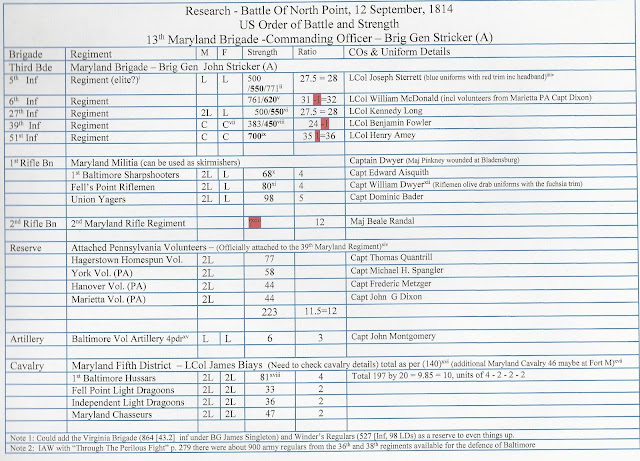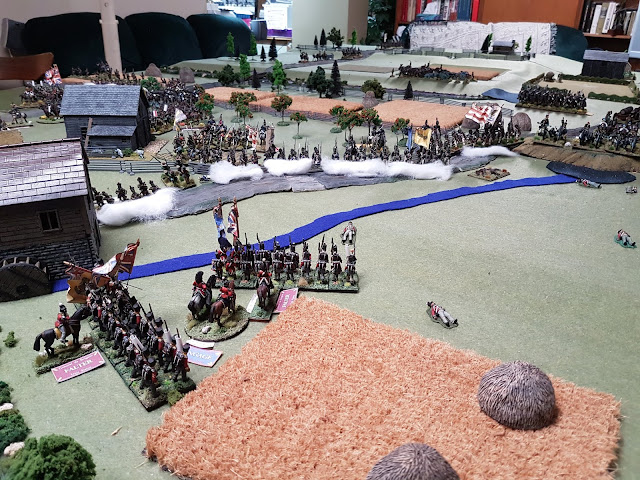The Battle of North Point, 12 September 1814
The Terrain, Research, Orders of Battle, Scenarios and Game Timeline
The Terrain
Probably the best Baltimore area campaign map that I have found (U.S. National Park Service).
The left half of the wonderfully panoramic display of the North Point Battlefield by Richard Schlecht from In Full Glory Reflected . Note the RMA rockets firing (left middle) correctly portrayed on a ladder launching frames and just above it Boulden Farm, the roads, fence lines, swampy area (fore ground bottom). The American line are in the right upper corner area.
Both of these 2d maps were most useful in portraying the battlefield with a view to accurately modelling the table top terrain.
The right side of the 2D map with the Bread and Cheese Creek emptying into the Back River (below). The British 4th Foot are emerging from the swampy area to attack the 51st Maryland Regiment, which forms the American left flank.
Note that the above view is from the opposite side in relation to the tactical maps below.
This tactical map of North Point is taken from the Maryland War of 1812 site. As you can see by my the measurements along the edges, I used this map to lay out the table top terrain. This map was useful to delineate the roads, rivers, inlets, bridges and buildings. I used a one inch equals 20 yds. to convert the distances from the map to the table top battlefield.
This is a player map converted from the above tactical map that shows wooded areas fence lines etc. plus the American no go area for British deployment (bottom right corner) for each side's use. The American player has the option to deploy both of the rifle Battalions any where outside of the two foot British deployment area (hidden known to GM and activated when British come within 6") . The remainder of the American Army can be place no closer than Boulden Farm.
Building the Battlefield Terrain
The table consists of several six foot tables, which are covered with interlocking two foot square foam pads and then covered with two six foot wide rolls of green felt.
Note the two tape measures that are used in conjunction with aforementioned tactical map to accurately place terrain features. In this the longer stream is Bread and Cheese Creek.
Now the other water features are added along with the major roads and two bridges. The road in the distance leads to British Landing area at North point and the road below left corner leads to Baltimore. Unfortunately, I neglected to take photos of the additional terrain features such as building fences trees etc. However, one see the full terrain effect in the photos of the first session.
The Orders of Battle and Research
The story of the research is contained within the Foot Notes. In terms of the unit strength under the ratio column (20:1) I have rationalized numbers to fit four figure stands. This results is pluses and minuses but evens out over all.
Game Orders of Battle and Scenario Objectives plus Restraints and Options
Note: I added a regular (B Gen Winder) and a small Virginian Brigade ( B Gen Singleton) to even up the units on each side. These brigades will arrive randomly via D6 roll based on the Time Line Chart (below). These Brigades were not present at North Point. However, their services were offered to BGen Stricker but they were declined.



























































